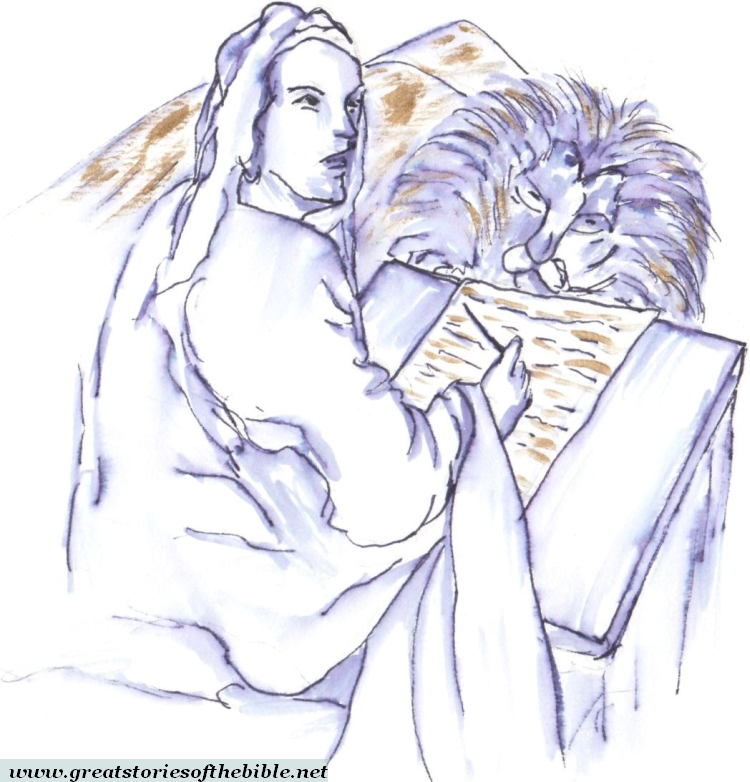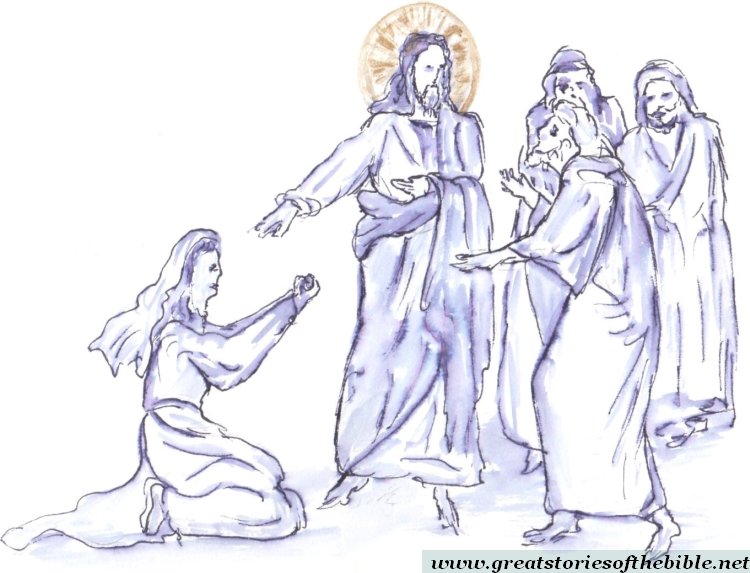Gospel of Mark
All things are possible to him who believes
The Tradition attributes to Mark, the secretary of Apostle Peter (see 1Pet 5,13) and collaborator of Apostle Paul (see Acts 12,25), the redaction of the second gospel that we meet in the New Testament. The Book was composed in the 60s of the I century AD and it was addressed to a community of Christians coming from the Gentiles (probably the one of Rome): Mark takes care of translating in Greek the Hebrew or Aramaic expressions (see e.g. Mark 5,41; 7,11) and to explain Jesus people’s traditions that were not known by his listeners (see e.g. Mark 7,3-4). The gospel of Mark, in the opinion of the majority of the scholars, is the most ancient of the four: Matthew and Luke used it as a source for their works.
The most important issues of the gospel are two: the search for Jesus and the knowledge of His person; the training of the true disciple (the gospel of Mark was probably used as a catechesis for the people that were preparing to receive the Baptism). To those two issues correspond the two parts in which can be divided «the Gospel of Jesus Christ, the Son of God» (Mark 1,1). In the first part Jesus presents His mystery to the people and to His disciples, always remaining “ahead” them, frustrating every one of their attempts to fence Him in too human categories (see e.g. Mark 1,37-38); this part culminates with Apostle Peter’s profession of Faith in Caesarea Philippi: «You are the Christ [Greek translation of the Hebrew word “Messiah“]» (Mark 8,29). Jesus, instead of praising His disciples for that acknowledgement, commands them to keep a strict silence about the fact (Mark 8,30); it is one more time necessary to clean every prejudice up in their mind: Jesus will not be a Christ triumphing over all the enemies with military power or violence. So, from this point onwards, Jesus starts His particular catechesis: «He began to teach them that the Son of Man must suffer many things, and be rejected by the elders, the chief priests, and the scribes, and be killed, and after three days rise again» (Mark 8,31). It is the second part of the gospel, culminating in another profession of Faith, by a pagan near Jesus’ cross: «When the centurion, who stood by opposite him, saw that he died like this and breathed his last, he said, “Truly this man was the Son of God!”» (Mark 15,39). Jesus is the Christ, the Father’s definitive envoy, as the Son of God who suffered the scandal of the cross and who resurrected on the third day. Moreover, about the scandal of the cross, Mark keeps his particular style even in the final of the Book, that remains open to urge the women and the reader’s Faith (Mark 16,9-20 is a latter canonic addiction): «When the Sabbath was past, Mary Magdalene, and Mary the mother of James, and Salome, bought spices, that they might come and anoint him. Very early on the first day of the week, they came to the tomb when the sun had risen. They were saying among themselves, “Who will roll away the stone from the door of the tomb for us?” for it was very big. Looking up, they saw that the stone was rolled back. Entering into the tomb, they saw a young man sitting on the right side, dressed in a white robe, and they were amazed. He said to them, “Do not be amazed. You seek Jesus, the Nazarene, who has been crucified. He has risen. He is not here. Look, the place where they put him! But go, tell his disciples and Peter, ‘He goes before you into Galilee. There you will see him, as he said to you.’” They went out, and fled from the tomb, for trembling and astonishment had come on them. They said nothing to anyone; for they were afraid» (Mark 16,1-8).
The symbol of Evangelist Mark is the winged lion: his narration in facts starts in the wilderness (Jesus’ birth and childhood is not present), where John the Baptist’s voice resound like a powerful roar to prepare the way of the Lord (see Mark 1,2-8).
As an extract of the gospel of Mark, I chose for you the meeting between Jesus and the Syrophoenician woman (Mark 7,24-30).
From there he arose, and went away into the region of Tyre and Sidon. He entered into a house, and did not want anyone to know it…
Jesus came from Gennesaret, where He had a harsh confrontation with the Pharisees and the scribes who arrived from Jerusalem. Tyre is a well-known city in the Old Testament, often being recipient of the prophets’ judgement oracles (e.g. see Jer 47,4: «because of the day that comes to destroy all the Philistines, to cut off from Tyre and Sidon every helper who remains»). Despite the hardened heart of His people, Jesus did not come to find among the Gentiles a more favorable audience to His Gospel: He wants to stay “unknown”.
…but he could not escape notice. For a woman, whose little daughter had an unclean spirit, having heard of him, immediately came and fell down at his feet. Now the woman was a Greek, a Syrophoenician by race.
Jesus’ will is immediately frustrated; a woman, disobeying all the Hebrew purity rules, gets in the house where Jesus is and asks His help for the possessed daughter. The woman is a Gentile, belonging to a society that is different from Jesus’ one in language, tradition, religion... the remark «Syrophoenician» adds a derogatory nuance to the woman, identifying her as a “bad lot”.
She begged him that he would cast the demon out of her daughter. But he said to her, “Let the children be filled first, for it is not appropriate to take the children’s bread and throw it to the dogs.”
The woman insistently begs Jesus and He insistently denies (the Greek verb tense is the imperfect: it points out that the heated discussion between them lasted for a long time). «Dogs» is the pejorative noun used by the Hebrew people to call the Gentiles, Jesus employs it for the woman; in the gospel of Mark the «bread» is Jesus’ mission and person: «He [Jesus] left them, and again entering into a boat, departed to the other side. Now they forgot to take bread; and they did not have more than one bread in the boat with them [Jesus Himself]» (Mark 8,13-14); «the children» coming «first» are the Israelites.
But she answered him, “Yes, Sir. Yet even the dogs under the table eat the children’s crumbs.” He said to her, “For this saying, go your way. The demon has gone out of your daughter.” And when she went away to her house, she found the child lying on the bed, the demon having left.
The situation has a turning point because of the woman’s answer. The Father’s mercy to the human beings is in Jesus so overabundant that can satiate Israel and remain enough to feed the Gentiles who are out of the Elected People. The woman arrived at the heart of Jesus’ mission: God loves every single man and woman and He gives them His almightiness to serve them and bless them. It is the woman’s faith that makes the miracle, not Jesus: He only states the fact. Who believes in God’s love for (all) the human beings and in His good almightiness can participate of that same almightiness: «All things are possible to him who believes» (Mark 9,23); «Jesus answered them, “Have the faith of God. Truly I tell you, whoever may tell this mountain, ‘Be taken up and cast into the sea,’ and does not doubt in his heart, but believes that what he says is happening; it will be done for him. Therefore I tell you, all things whatever you pray and ask for, believe that you have received them, and you shall have them» (Mark 11,22-24).
The story of the Syrophoenician woman is the only time in the gospel in which someone tried to change Jesus’ mind and was right. We can remember, on the contrary, Apostle Peter’s case: «Peter took him [Jesus], and began to rebuke him [because He had spoken about His Passion]. But he, turning around, and seeing his disciples, rebuked Peter, and said, “Get behind me, Satan! For you have in mind not the things of God, but the things of men.”» (Mark 8,32-33).
The woman won because it is like she got in the Heart of God, understanding the deepest sense of Jesus’ mission, the Father’s will He obeys: unlimited mercy towards all men and women. I invite you to read the same episode in the gospel of Matthew (Matt 15,21-28) and to find out the differences between the two evangelists (see Introduction).
In the next post we will read the gospel of Luke.